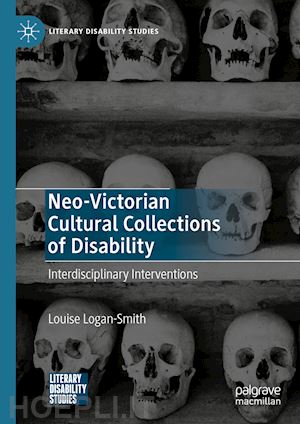
Questo prodotto usufruisce delle SPEDIZIONI GRATIS
selezionando l'opzione Corriere Veloce in fase di ordine.
Pagabile anche con Carta della cultura giovani e del merito, 18App Bonus Cultura e Carta del Docente
Chapter 1: Introduction.- Chapter 2: Visual Art, Disability and Museum Culture in Neo-Victorianism.- Chapter 3: Alternative Archives: Approaching Museum Collections through Neo-Victorian Fiction.- Chapter 4: Behind the Vitrine Glass’: Revisiting Approaches to the Textual and Material Display of Sarah Baartman and Julia Pastrana.- Chapter 5: “Monster Men” and the Ethics of Display: The Afterlife of Charles Byrne ‘The Irish Giant’.- Chapter 6: The Case of Joseph Merrick: Fictionalising Disability in the Museum Space.- Chapter 7: ‘In Full Voice’: Narrating the Giant Female Body in Heritage Practices.- Chapter 8: Afterword.
Louise Logan-Smith is Associate Lecturer in English Studies and Tutor of Creative Writing at Teesside University, UK, where she teaches modules on literary culture in the twenty-first century, creative writing, and Victorian and Neo-Victorian literature.











Il sito utilizza cookie ed altri strumenti di tracciamento che raccolgono informazioni dal dispositivo dell’utente. Oltre ai cookie tecnici ed analitici aggregati, strettamente necessari per il funzionamento di questo sito web, previo consenso dell’utente possono essere installati cookie di profilazione e marketing e cookie dei social media. Cliccando su “Accetto tutti i cookie” saranno attivate tutte le categorie di cookie. Per accettare solo deterninate categorie di cookie, cliccare invece su “Impostazioni cookie”. Chiudendo il banner o continuando a navigare saranno installati solo cookie tecnici. Per maggiori dettagli, consultare la Cookie Policy.